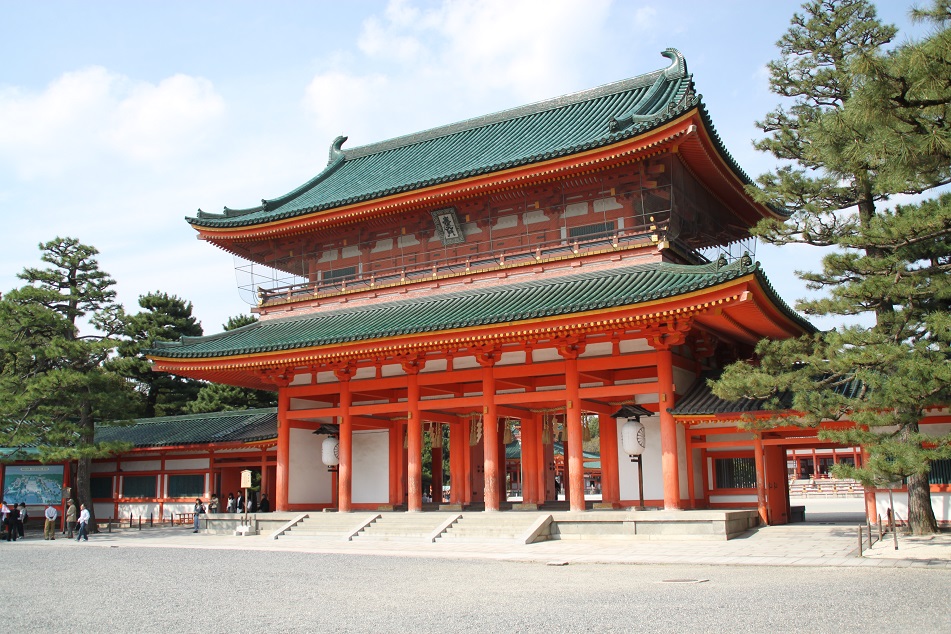 Oten-mon, the main gate to Heian Shrine compound
Oten-mon, the main gate to Heian Shrine compound
Hosting the world’s fair has become a means some countries have embraced to promote their economic progress and development agenda to an international audience. Since the event’s first run in 1851, which celebrated advancements in industrial technology in the United Kingdom and other countries, a number of host cities have witnessed a change in their skylines thanks to the construction of monumental landmarks completed as the centerpiece of the exhibitions. Melbourne’s Royal Exhibition Building, Paris’s Eiffel Tower, and Brussels’ Atomium were all finished just in time for the world expo in each respective city.
Late 19th-century Japan, however, took a different approach. Amid the euphoria of reopening itself to the world after centuries of self-isolation imposed by the Tokugawa shogunate, Japan was experiencing rapid industrialization under the watchful eyes of Emperor Meiji, the architect of the country’s rise as a world power…
View original post 533 more words